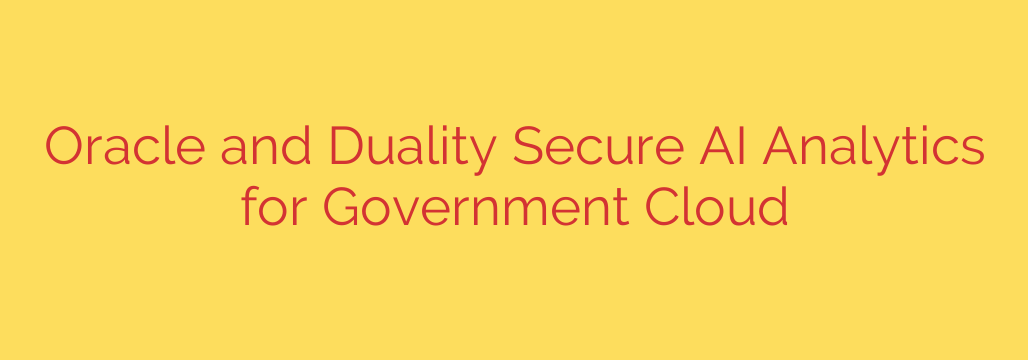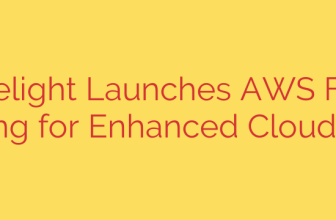
Revolutionizing Public Sector Analytics: The Rise of AI on Encrypted Data
Government agencies today face a critical challenge: they are custodians of vast amounts of highly sensitive data, yet they need to analyze this information to generate critical insights for national security, public health, and economic stability. The core dilemma is how to unlock the value of this data using advanced AI and machine learning without exposing it to risk or violating stringent privacy regulations.
The traditional approach of decrypting data before analysis creates a window of vulnerability that is simply unacceptable for classified information, citizen PII (Personally Identifiable Information), or sensitive intelligence. This has often led to data remaining locked away in silos, its potential untapped. However, a new frontier in secure computing is changing this paradigm entirely.
The Challenge: Balancing Insight with Unbreachable Security
For public sector organizations, the stakes are incredibly high. Data relating to national security, financial crime, or public health research must be protected with the highest levels of security. Any collaboration between agencies—or with private sector partners—introduces complexity and risk.
Key obstacles have included:
- Data Silos: Information is often isolated within a single agency, preventing the cross-functional analysis needed to identify complex threats or trends.
- Compliance and Regulation: Strict laws and mandates govern how data can be used, shared, and analyzed, creating significant hurdles for collaborative projects.
- Security Risks: The moment data is decrypted for use, it becomes a target. This risk has severely limited the application of powerful cloud-based AI analytics on the most sensitive datasets.
A Breakthrough in Data Protection: Privacy-Enhancing Technologies
The solution lies in a category of advanced cryptographic methods known as Privacy-Enhancing Technologies (PETs). These technologies are designed to enable data processing and analysis while keeping the underlying information confidential.
Among the most powerful of these is Fully Homomorphic Encryption (FHE). Often considered the “holy grail” of cryptography, FHE allows complex computations, including AI model training and inferencing, to be performed directly on encrypted data.
Essentially, FHE makes it possible to analyze data in its encrypted state, without ever needing to decrypt it. The results of the analysis are also encrypted and can only be accessed by the authorized data owner. This eliminates the vulnerability of data-in-use, providing a previously unattainable level of security for AI workloads.
Bringing Secure, High-Performance AI to the Government Cloud
Harnessing the power of FHE requires immense computational resources. The complex mathematical operations involved demand a robust, high-performance cloud infrastructure built for security and scale.
This is where advanced cloud platforms, particularly those designed for government workloads, are making a critical difference. By combining FHE-powered analytics platforms with secure, high-performance computing environments like Oracle Cloud Infrastructure (OCI), it’s now possible for government agencies to:
- Train AI models on encrypted data from multiple sources without any party exposing its raw information.
- Run complex analytics to detect patterns in financial data, intelligence reports, or health records while preserving complete privacy.
- Enable secure multi-agency collaboration on sensitive projects, knowing that the underlying data is never visible to collaborators or even the cloud provider.
This combination of next-generation encryption and powerful cloud computing provides a secure, end-to-end solution for running sensitive analytics workloads.
Real-World Applications for Secure AI
This technological advancement isn’t just theoretical; it has profound, practical implications for a wide range of government functions.
- National Security and Intelligence: Agencies can now securely combine and analyze intelligence from different sources to identify potential threats and patterns, without exposing sensitive operational details.
- Financial Crime and Anti-Money Laundering (AML): Financial institutions and government bodies can collaborate to detect sophisticated money laundering schemes by analyzing combined transaction data without violating customer privacy.
- Healthcare and Medical Research: Research institutions can aggregate and analyze sensitive patient data from multiple hospitals to accelerate medical breakthroughs, all while maintaining strict HIPAA compliance and patient confidentiality.
Actionable Takeaways for Public Sector Leaders
For agencies looking to leverage their data more effectively without compromising security, this evolution presents a clear path forward.
- Explore Privacy-Enhancing Technologies: Begin investigating how PETs like FHE can be integrated into your data strategy to unlock previously inaccessible datasets.
- Prioritize Secure, High-Performance Infrastructure: Standard cloud environments may not be sufficient. Look for cloud providers with a dedicated, secure government cloud offering the performance needed to handle computationally intensive cryptographic tasks.
- Rethink Data Collaboration: This technology fundamentally changes the rules of collaboration. Develop frameworks for multi-party data analysis that leverage encryption to protect all participants’ information while achieving a common goal.
The ability to perform AI-driven analytics on fully encrypted data marks a pivotal moment for the public sector. It closes a critical security gap and opens up a new world of insight, enabling government agencies to fulfill their missions more effectively and securely than ever before.
Source: https://datacenternews.asia/story/oracle-duality-bring-secure-ai-analytics-to-government-cloud








